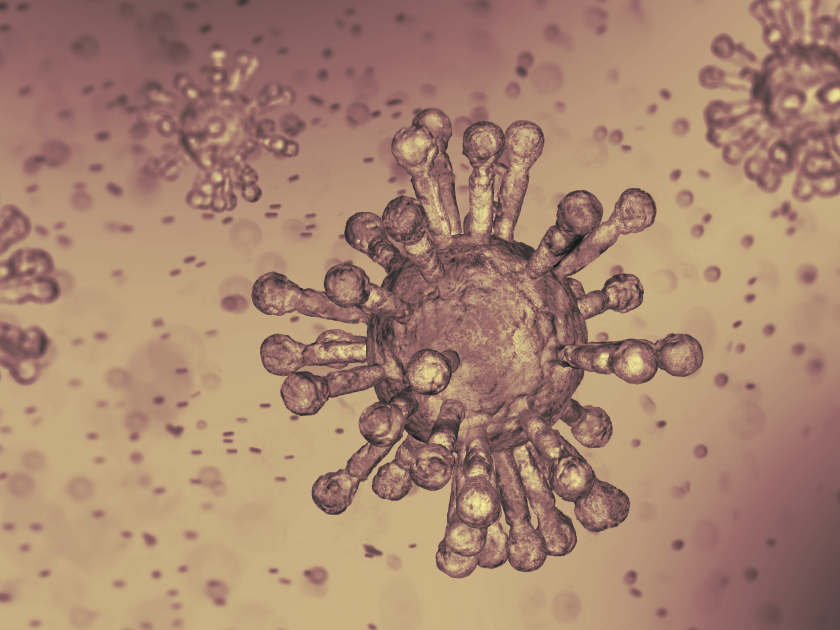The claim: COVID-19 is worse in Democratic states because of government action
Americans’ coronavirus pandemic experience is increasingly different, as states and cities ease social distancing orders and debate next steps for containing the virus.
Some people have pointed to differences in the reported number of cases by state as a sign of partisan incompetence.
A graphic on Facebook displays the population of two sets of states alongside the number of confirmed coronavirus cases and deaths in each grouping. The statistics in the graphic are said to come from April 20. The photo has been shared several hundred times on Facebook across multiple accounts, and has also appeared on Twitter.
Another similar image on Instagram has the same states and claims to provide coronavirus data for April 26.
The statistics in the graphics are inaccurate. While government action has been significant in determining the spread of COVID-19, underlying regional factors are more likely the cause of diverging case numbers between states.
Fact check:What’s true and what’s false about coronavirus?
COVID-19 statistics by state
The graphics specify 20 states, separating them by perceived partisan lean. It lists New York, New Jersey, Massachusetts, Pennsylvania, California, Michigan, Illinois, Louisiana, Connecticut and Maryland as states run or controlled by Democrats. And it lists Texas, Florida, Ohio, Arizona, Tennessee, Indiana, Missouri, South Carolina, Alabama and Oklahoma as being run or controlled by Republicans.
One group of states, which are mostly governed by Democrats (Maryland has a Republican governor), is said to have a population of 104.8 million people. According to Census Bureau estimates, the 10 states had a combined population of over 124 million in 2019.
The second group of states, which are governed by Republicans, is said to have a population of 103.1 million in the graphic. This number is in line with Census Bureau estimates for 2019.
According to data collected from state public health departments by USA TODAY, the combined number of cases in those states governed by Democrats was 534,570 on April 20. That is about 40,000 fewer cases than reported in the graphic. The actual death toll was also lower by 4,998, at 29,628.
More:Trump accuses Democratic governors of keeping lockdowns because of ‘politics’ as he visits Michigan
The Republican-governed states conversely reported higher numbers of cases and deaths than the graphic claims. According to data from April 20, 101,664 cases were reported in the second grouping of states compared to — 97,150 in the image — with 3,827 deaths, which is 1,201 higher than in the image.
The number of infections and deaths rose in both groups of states over time. By April 26, when new graphics made similar claims about the states, coronavirus cases in the “Democrat-run” grouping had reached 687,654, with 38,477 deaths. The graphic states there were 44,924 deaths at that time.
“Republican-run” states also had a jump in the collective number of cases, reaching 125,520 confirmed coronavirus infections by April 26 and 4,566 deaths. The graphic puts the number of deaths at 4,610.
The number of cases has grown across the United States in the interceding month, though many officials have cited slower infection rates as a reason to begin easing social distancing measures.
A USA TODAY investigation also found that many states are likely significantly under-reporting the number of COVID-19 cases. A lack of accurate and widespread testing has made it difficult to detect and track the virus across the country.
An analysis by 24/7 Wall St. found that many of the states with the highest daily infection rates are in the Northeast and mid-Atlantic regions, states which are mostly governed by Democrats. That said, infectious disease experts have attributed this to correlation, not causation.
More:Coronavirus spread: In which states is COVID-19 growing fastest?
Demographics, geography and COVID-19
Public health experts have gained greater clarity into how COVID-19 is most likely to spread. There is consensus, for instance, that people are more likely to contract COVID-19 from contact with an infected person by breathing and coughing or even just talking, especially indoors.
Dr. Joseph Eisenberg, a professor of epidemiology at the University of Michigan, cites a region’s density and connectivity to other locales as important factors in its likely transmission rate. In other words, major international travel hubs with high density are the areas most vulnerable to an outbreak.
“New York City has exceptionally high density,” Eisenberg noted, which likely explains part of its severe outbreak. Other factors, like the underlying behavior and health conditions in a population, are also important in determining the spread of a virus.
In a country as large and varied as the United States, regional differences in case numbers are to be expected, according to Eric Toner, an infectious disease expert at the Johns Hopkins Center for Health Security.
“As the virus spreads from place to place over time some places will be seeing rising numbers while others are seeing falling numbers or may not have even been affected yet,” Toner told USA TODAY. “Local differences such as population density, demographic factors and local industries will also greatly affect the number of cases.”
Our ruling: False
We rate this claim FALSE because it is not supported by our research. The statistics in the circulating graphic are inaccurate. Regional differences in case numbers and deaths from COVID-19 are primarily explained by underlying factors, including density and the demographics of those infected.
Our fact-check sources:
Thank you for supporting our journalism. You can subscribe to our print edition, ad-free app or electronic newspaper replica here.
Our fact check work is supported in part by a grant from Facebook.




